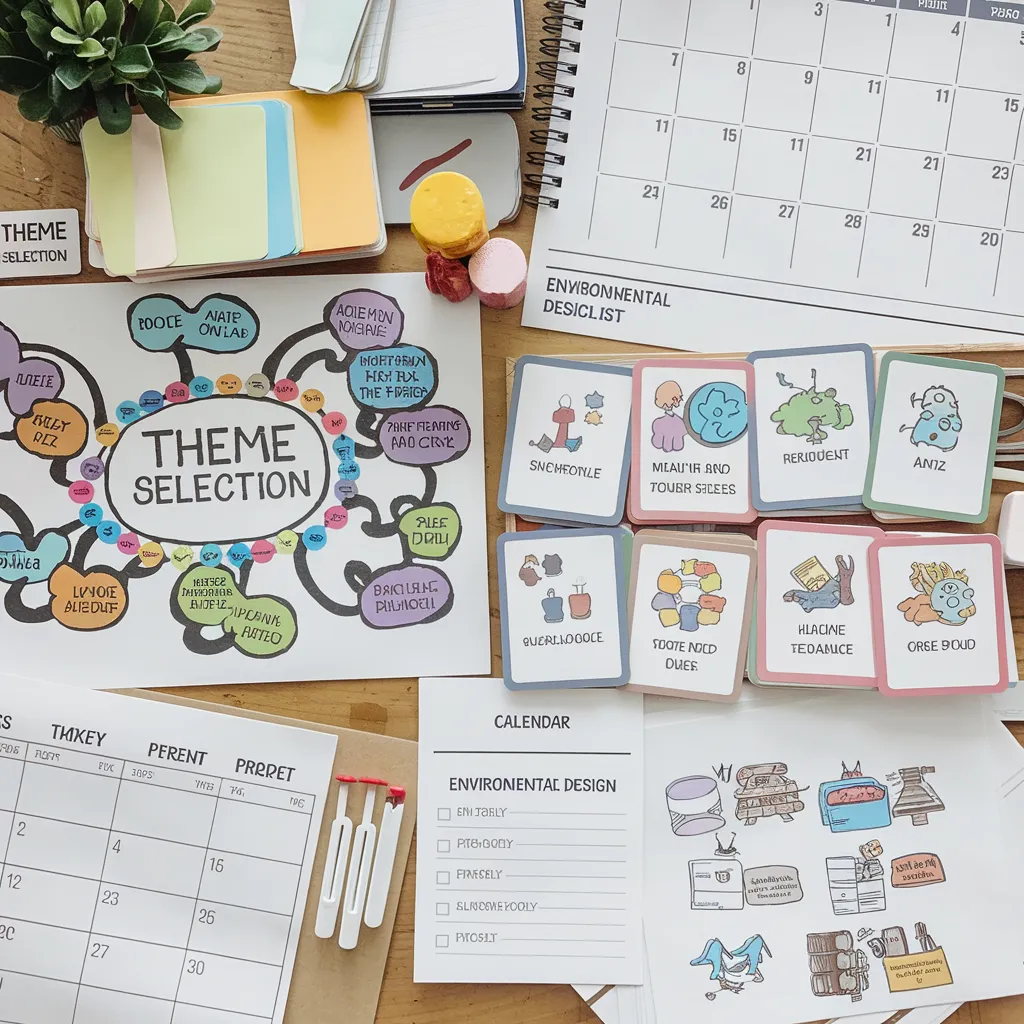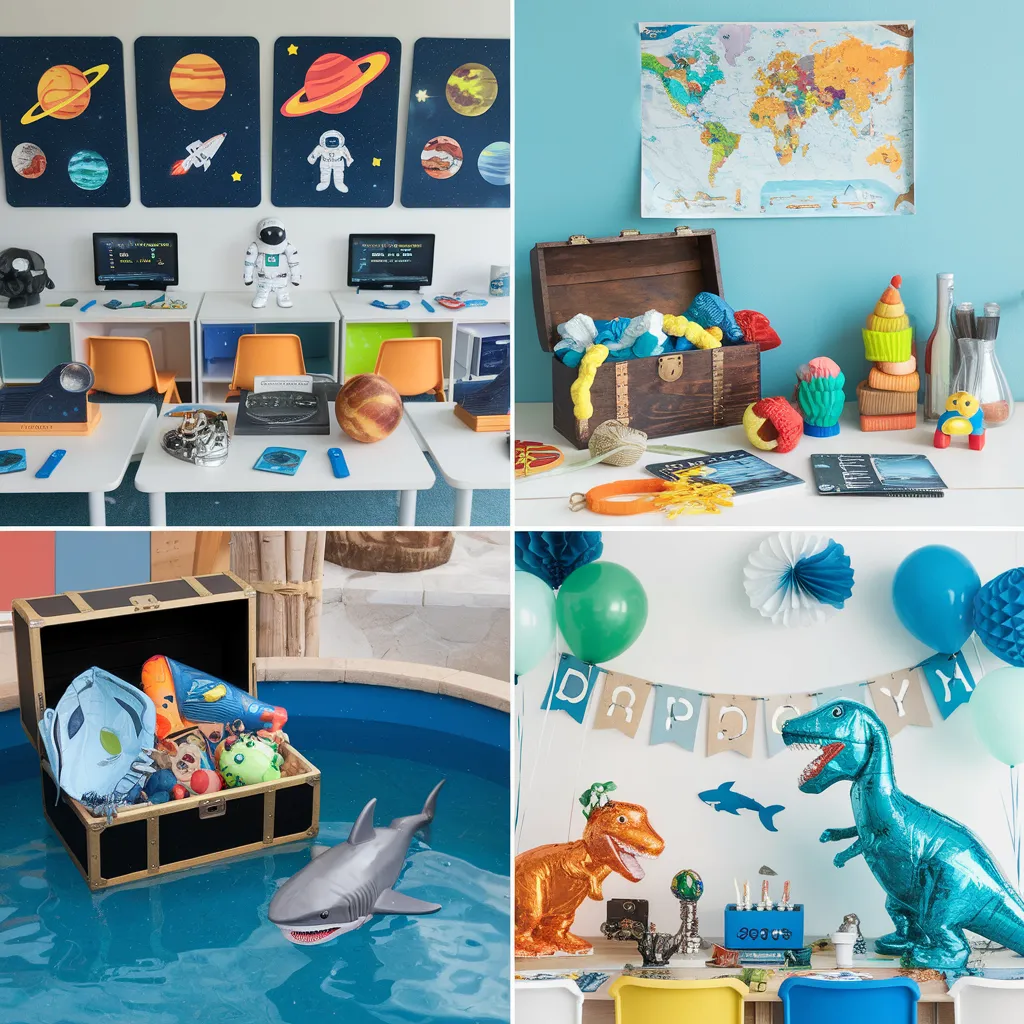Learning how to plan themed activities effectively transforms ordinary educational experiences into cohesive, memorable adventures that captivate participants of all ages. Whether you’re a teacher organizing classroom learning, a parent planning birthday celebrations, or an event coordinator designing corporate team-building, themed activities create powerful connections that enhance engagement and retention. The process of developing cohesive themed experiences might seem overwhelming at first, but with a structured approach, you can create meaningful activity sequences that delight participants while achieving your educational or entertainment goals. From selecting the perfect theme to designing complementary activities across different domains, mastering how to plan themed activities opens endless possibilities for creating immersive, impactful experiences.

The Benefits of Learning How to Plan Themed Activities
Understanding how to plan themed activities offers substantial advantages for both organizers and participants:
Educational Advantages
- Enhanced retention: Themed contexts create stronger memory connections
- Multi-dimensional learning: Activities naturally span different skill domains
- Increased motivation: Engaging themes generate intrinsic interest
- Contextual understanding: Concepts connect within meaningful frameworks
- Transfer of knowledge: Skills practiced in themed contexts apply broadly
Organizational Benefits
When you learn how to plan themed activities effectively, you gain:
- Streamlined Preparation
- Focused resource gathering around central themes
- Natural activity sequencing within thematic frameworks
- Simplified decoration and environment decisions
- Cohesive material development with clear parameters
- More efficient shopping and supply management
- Participant Engagement Benefits
- Immediate interest through appealing thematic hooks
- Deeper involvement through immersive experiences
- Extended attention spans with connected activities
- Stronger emotional connections to learning or events
- More meaningful documentation and reflection opportunities
A Step-by-Step Guide on How to Plan Themed Activities
Follow this systematic process to create cohesive, engaging themed experiences:

Phase 1: Theme Selection and Development
- Choose a Compelling Central Theme
- Consider participant interests and developmental stages
- Evaluate available resources and materials
- Assess alignment with learning or celebration goals
- Check seasonal appropriateness and timeliness
- Ensure sufficient breadth for multiple activities
- Create a Thematic Framework
- Identify key concepts or elements within the theme
- Develop central questions or challenges
- Establish thematic vocabulary and terminology
- Gather inspirational images and references
- Define the overall mood and atmosphere
- Set Clear Objectives
- Articulate specific learning or experience goals
- Define success metrics for the themed activities
- Establish appropriate challenge levels
- Identify essential skills to be practiced
- Determine necessary accommodations for diverse needs
Phase 2: Activity Design and Integration
Learning how to plan themed activities requires thoughtful activity development:
- Brainstorm Activity Possibilities
- Generate ideas that naturally connect to the theme
- Consider activities across multiple domains (physical, creative, cognitive)
- Evaluate potential for different group sizes and arrangements
- Assess indoor/outdoor options
- Think through quiet/active activity balance
- Create Activity Sequences
- Arrange activities in logical progression
- Build from simple to complex concepts
- Alternate high-energy and calming experiences
- Design smooth transitions between activities
- Plan culminating projects or celebrations
- Develop Detailed Activity Plans
- Create step-by-step instructions for each activity
- List all required materials and preparation steps
- Anticipate potential challenges and modifications
- Estimate realistic time requirements
- Plan extension options for varied interest levels
Phase 3: Implementation and Environment
The environment plays a crucial role when learning how to plan themed activities:
- Design Thematic Spaces
- Create immersive environmental elements
- Plan strategic decoration placement
- Arrange functional activity stations
- Consider traffic flow and accessibility
- Incorporate multi-sensory thematic components
- Prepare Materials and Resources
- Gather and organize all required supplies
- Create or adapt thematic props and tools
- Develop visual supports and instruction guides
- Prepare technology components if needed
- Assemble emergency backup materials
- Plan Thematic Transitions
- Create themed attention signals
- Develop transition activities that maintain theme
- Design clear station rotation systems
- Prepare themed timekeeping approaches
- Plan for smooth beginnings and closures

How to Plan Themed Activities for Different Contexts
Adapt your approach to suit specific situations:
How to Plan Themed Activities for Educational Settings
- Classroom Implementation Strategies
- Align themed activities with curriculum standards
- Develop assessment approaches within thematic contexts
- Create documentation systems for learning evidence
- Design flexible grouping strategies
- Plan for differentiated participation options
- Home Learning Applications
- Scale activities for smaller groups or individuals
- Adapt materials using common household items
- Create manageable preparation approaches
- Develop flexible timing for family schedules
- Design multi-age participation opportunities
How to Plan Themed Activities for Celebrations
- Party and Event Approaches
- Create cohesive invitation, decoration, and activity themes
- Design activity flow that accommodates arrivals and departures
- Develop adaptable plans for different attendance numbers
- Create themed food and refreshment connections
- Plan appropriate take-home elements
- Community Event Considerations
- Design activities with brief completion times
- Create clear, self-explanatory instruction displays
- Develop drop-in friendly participation options
- Plan for various age groups and ability levels
- Create high-visibility, engaging demonstrations
Troubleshooting When Learning How to Plan Themed Activities
Anticipate and address common challenges:

Overcoming Resource Limitations
- Budget-Conscious Approaches
- Prioritize high-impact thematic elements
- Source materials from dollar stores and thrift shops
- Utilize digital resources and printables
- Repurpose and adapt existing materials
- Focus on experiences rather than elaborate props
- Time Management Strategies
- Develop reusable themed resource collections
- Create modular activity plans that scale easily
- Establish preparation timelines with priorities
- Identify delegation opportunities
- Focus preparation efforts on essential elements
Adapting for Diverse Participants
- Accessibility Modifications
- Ensure physical accessibility of all activities
- Create multi-sensory engagement opportunities
- Develop activities with multiple participation modes
- Provide appropriate communication supports
- Plan quiet spaces within themed environments
- Interest Level Adaptations
- Create multiple entry points to thematic content
- Develop choice-based exploration options
- Plan for varied complexity levels
- Create observer roles for hesitant participants
- Design graduated challenge progressions
Conclusion
Learning how to plan themed activities opens endless possibilities for creating engaging, cohesive experiences that captivate participants while achieving educational or entertainment goals. By following a systematic approach—from thoughtful theme selection through detailed activity design to immersive implementation—you can create themed experiences that participants remember long after the event ends. Start small with a single themed day or event, carefully noting what works well and where adjustments might improve future experiences. With practice, your confidence in how to plan themed activities will grow, allowing you to create increasingly sophisticated and impactful thematic experiences. Remember that the most successful themed activities balance careful planning with flexibility, creating frameworks that guide engagement while allowing for spontaneous exploration and discovery within the thematic context.
42 Inspiring Theme-Based Classroom Decorations That Transform Learning Environments
Frequently Asked Questions
How far in advance should I start learning how to plan themed activities?
Begin planning major themed events 4-6 weeks ahead, with more complex or large-scale themes requiring additional lead time. Start with theme selection and general framework development, then progress to specific activity design and material gathering as the date approaches. Create a backwards planning timeline that includes key preparation milestones—theme selection (4-6 weeks before), activity planning (3-4 weeks before), material gathering (2-3 weeks before), and environment preparation (several days before). For recurring themed activities, develop a rotating planning system where you’re always thinking a few themes ahead. Remember that while experience will help you work more efficiently, rushing themed preparation often results in missed opportunities for rich thematic connections.
How do I choose themes that appeal to different age groups or interests?
Select broad, adaptable themes with multiple entry points rather than narrow, specific ones. Consider universal concepts (like « exploration, » « transformation, » or « connections ») that can be adapted through age-appropriate activities and materials. Research participant interests through simple surveys or observation, looking for patterns in preferences. Test potential themes against diverse interest areas—does the theme offer components that connect to science, art, physical activity, and social interaction? The most successful multi-age themes often connect to everyday experiences while offering new perspectives or adventures within familiar contexts. When selecting themes for diverse groups, prioritize concepts with both concrete and abstract dimensions that can engage participants at different developmental levels.
What if participants lose interest in themed activities during implementation?
Prepare flexible pivot strategies by developing multiple activities within your theme that engage different learning styles and interests. Watch for engagement cues and be willing to accelerate, extend, or modify activities based on participant response. Create « energy shift » options within your theme for quick transitions if interest wanes. Consider whether disengagement reflects activity challenge level (too easy/difficult), physical needs (hunger, fatigue), or actual theme disinterest. The most successful themed experience facilitators balance commitment to their planned framework with responsiveness to participant cues, remembering that the ultimate goal is engagement rather than perfect execution of the original plan.
How can I create themed activities with limited budget and resources?
Focus first on transforming ordinary activities through thematic language, challenges, and framing rather than elaborate decorations or specialized materials. Identify the minimum viable thematic elements that create immersion—often these are vocabulary, music, simple visual cues, and facilitator enthusiasm rather than expensive props. Create a priority investment list directing limited funds toward reusable core items. Develop themed adaptations of familiar games and activities rather than purchasing specialized materials. Engage participants in creating thematic elements as part of the experience. Remember that successful themed activities rely more on imagination and engagement than elaborate physical resources—a cardboard box can become anything from a spaceship to a treasure chest with the right thematic framework.
How do I evaluate the success of my themed activities?
Develop clear success criteria before implementation based on your primary objectives. Create simple observation tools to track engagement, completion, and enthusiasm during activities. For educational themes, design appropriate pre/post assessments to measure learning within the thematic context. Gather participant feedback through age-appropriate methods (verbal responses, simple surveys, photo selection of favorite activities). Document the experience through photos or videos for later review and reflection. The most valuable evaluation approaches capture both observable outcomes and participant experiences, remembering that different stakeholders (teachers, parents, participants) may define success differently within the same themed experience.
